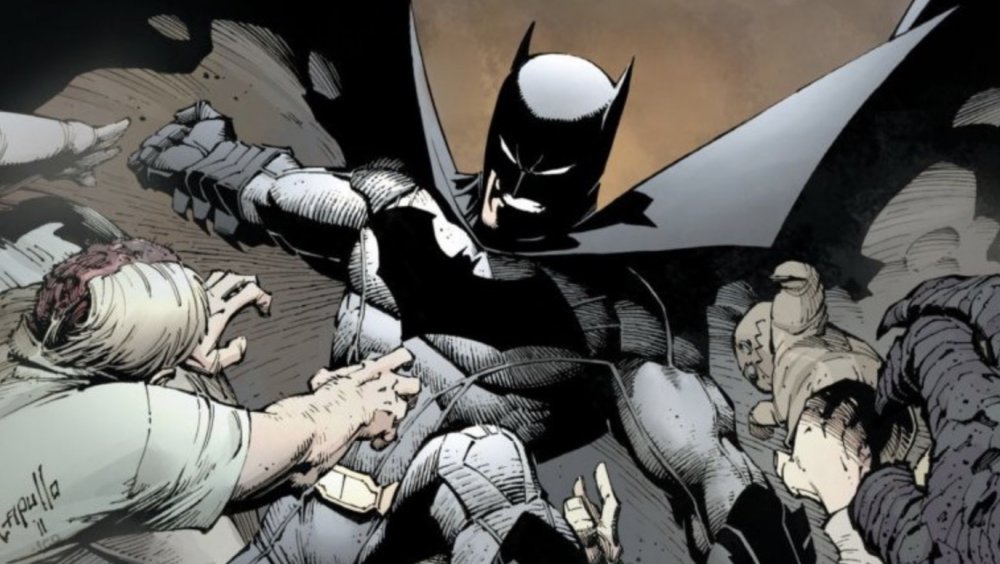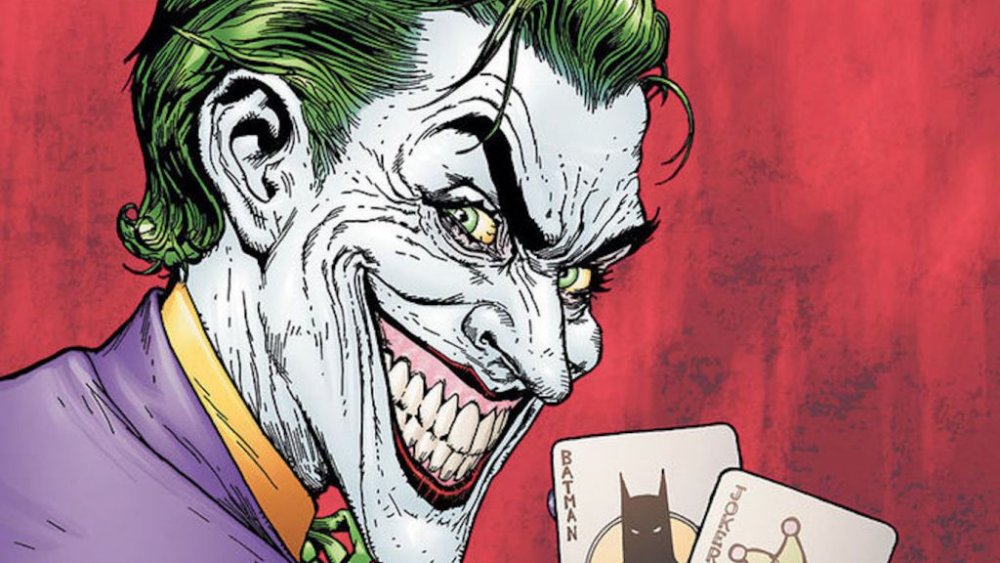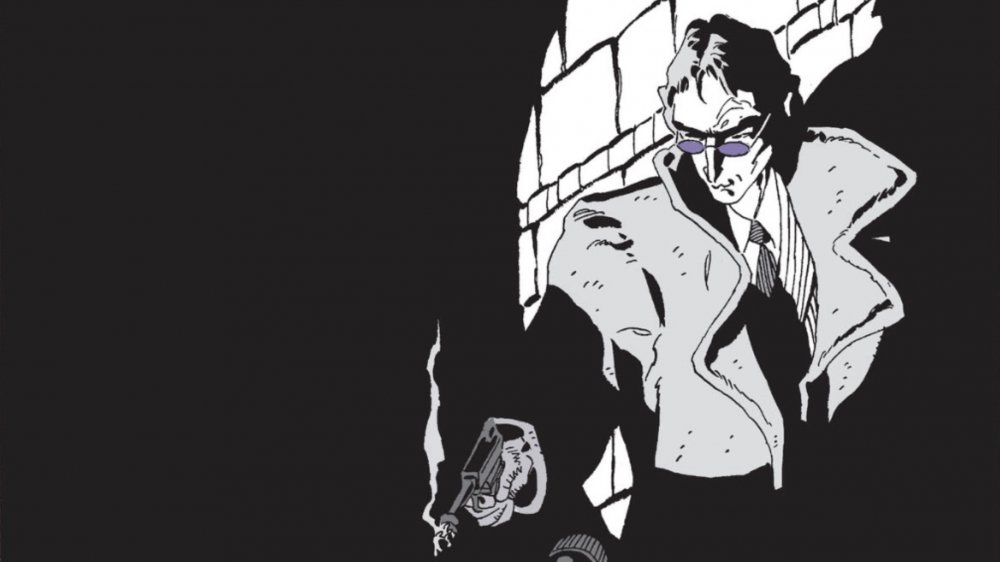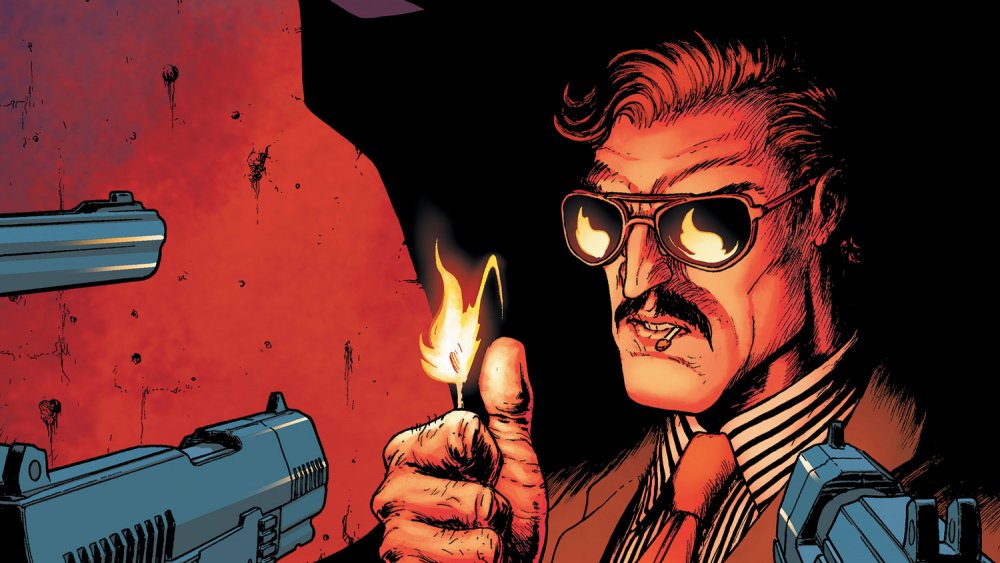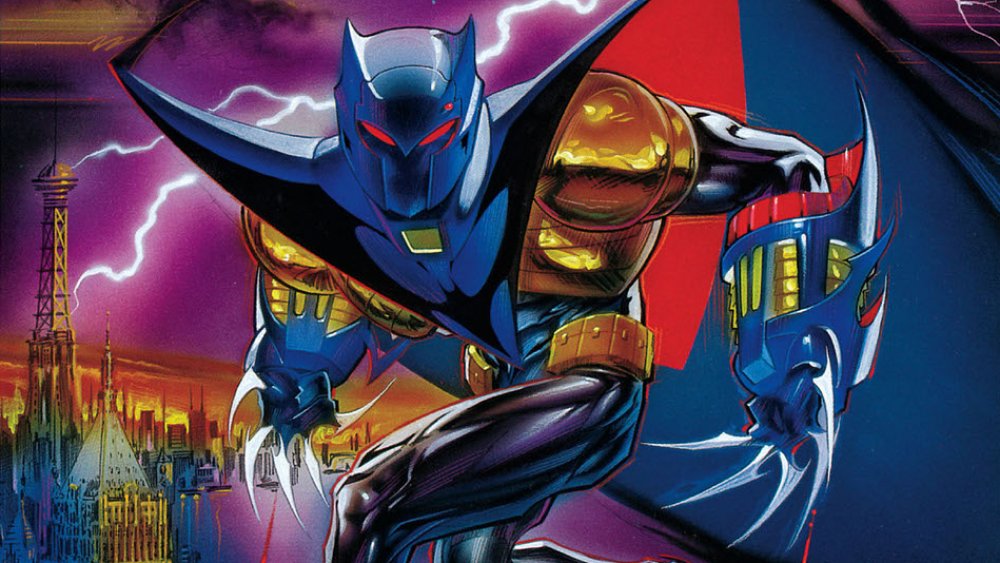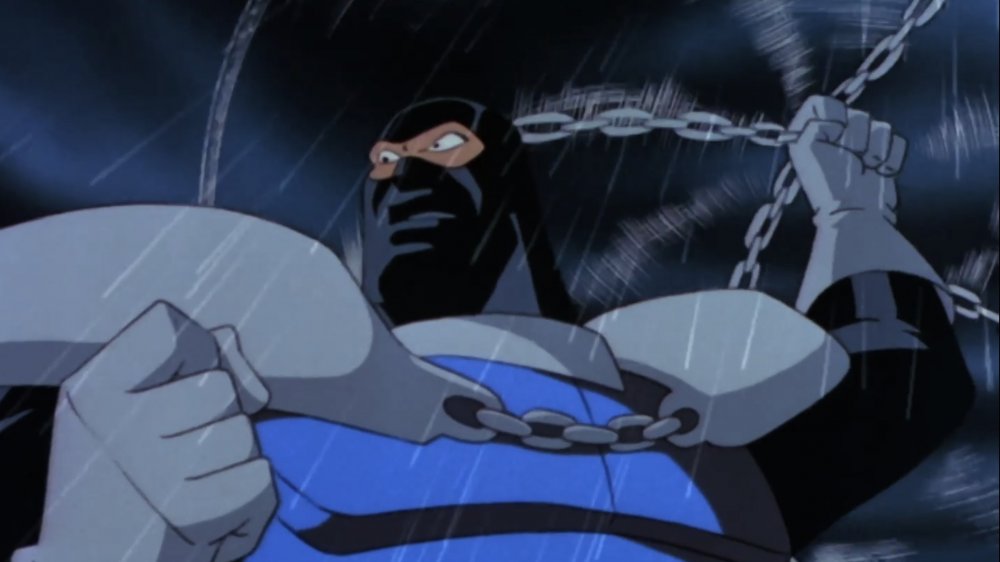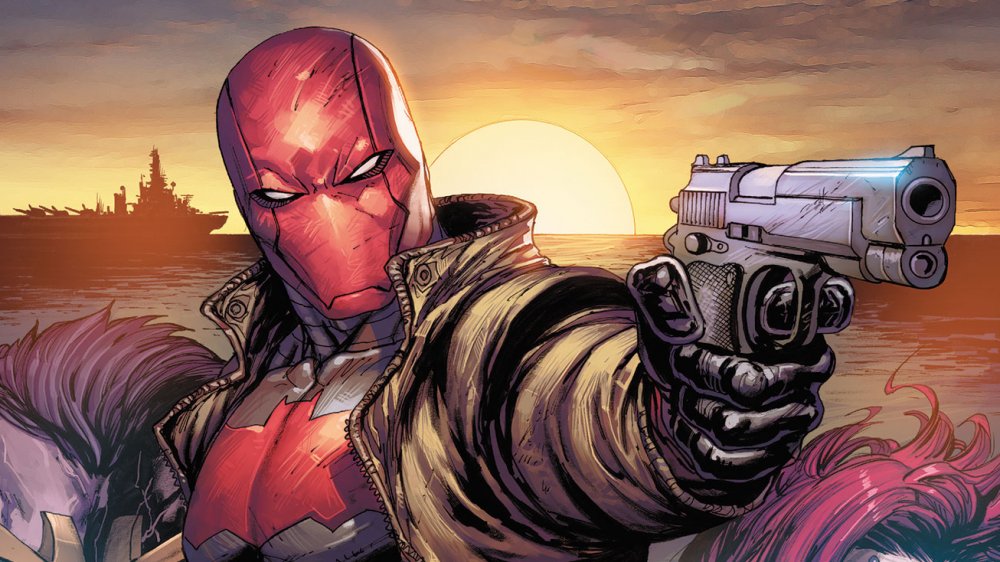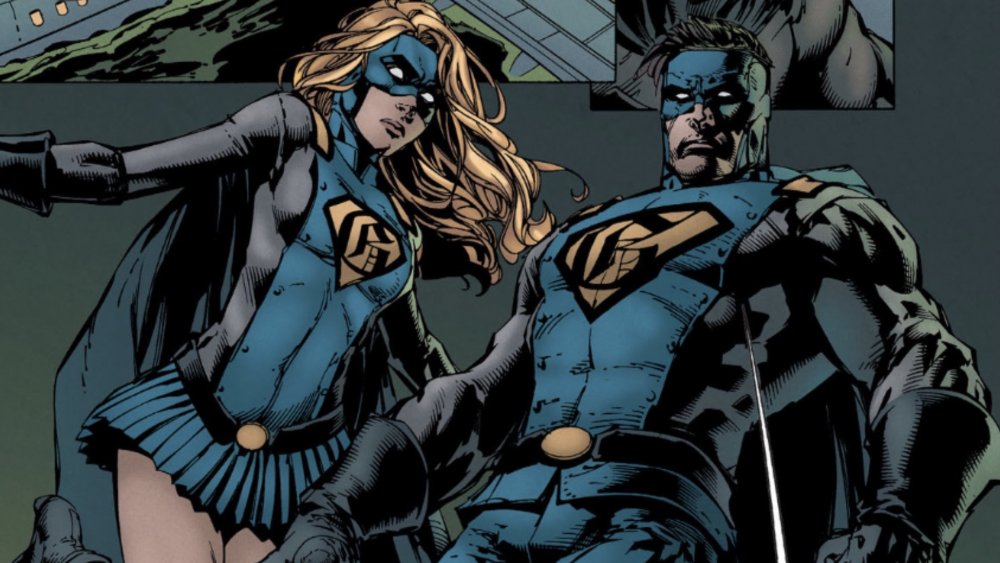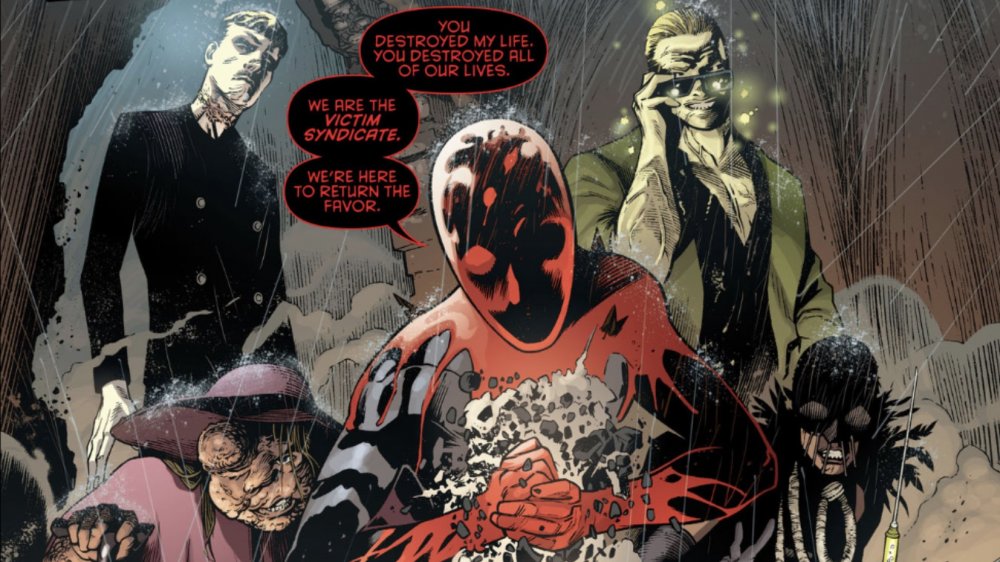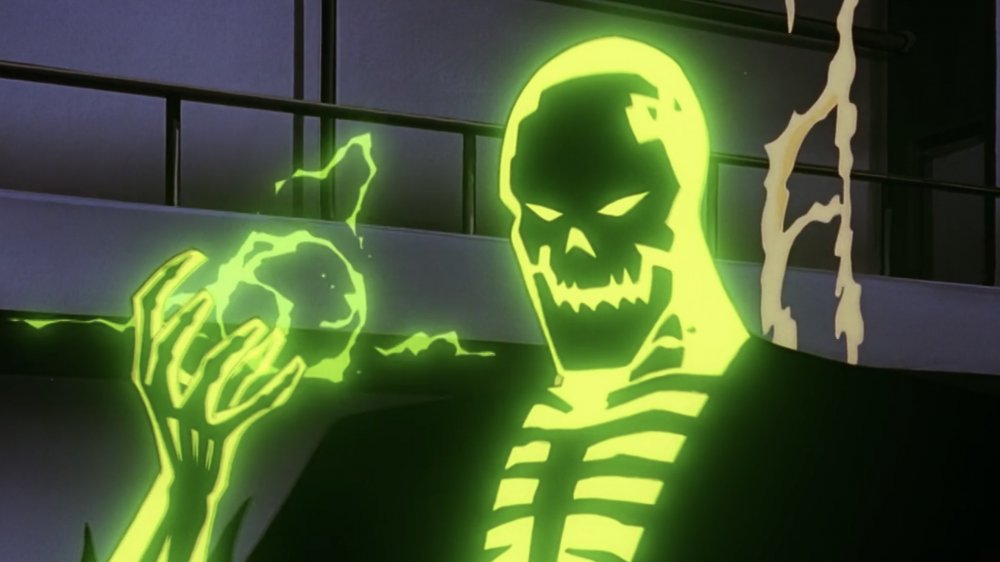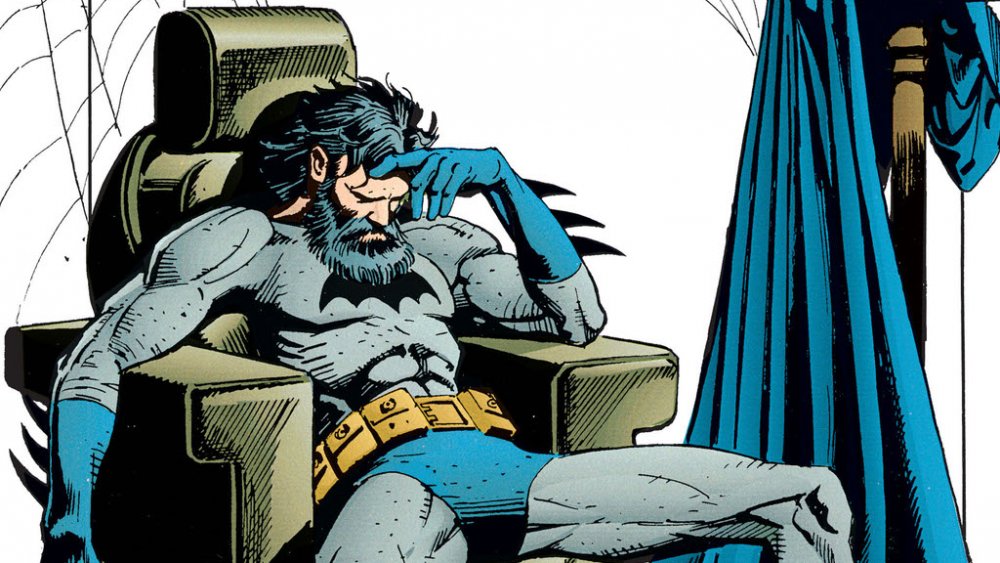These Villains Were Created By Batman
No superhero has more iconic villains than Batman, and no one's less happy about it than the Dark Knight himself. Gotham City breeds colorful and menacing rogues by the dozen, and no amount of punches and Batarangs seem to discourage new ones from cropping up. In fact, on more than one occasion, Batman's efforts to control the spread of Gotham's madness have ended up creating new, even worse enemies for him to fight. Whether he's training good guys who go bad or driving bad guys to get worse, Batman has made his fair share of mistakes over the course of his 80-plus-year career, and they have a habit of coming back to bite him in themed makeup and a creepy costume.
Before you get too down on the man, remember: Batman has created a lot more heroes than he has villains. Indeed, he's inspired a veritable army of roof-dwelling vigilantes who perpetuate his tradition. But as proud as he may be of these successes, Batman is the kind of person who takes obsessive stock over his failures. We have no doubt he has reviewed the following list to himself many times, during his regular brooding sessions in the Batcave. These are the villains Batman created.
The Joker
Much of what makes the Joker so terrifying is the mystery surrounding his origins. While most major DC Comics characters have clear, concise origin stories, the Joker's various creation myths are openly acknowledged as being mostly made up by the madman himself. It's assumed by most fans that we'll never know the truth about the Joker's beginnings for certain — but some stories do hang on with unique tenacity. His most popular comics origin story comes from 1987's The Killing Joke, in which Joker recounts his origins as a down-on-his-luck stand-up comedian who suffers a string of tragedies that turn him mad. He then immediately recants this tale — but there's no doubt that it's the one that has endured.
In this version of the Joker's origins, he crosses paths with Batman one fateful night at Ace Chemicals. The man who would be Joker is there as part of a heist, in the guise of the Red Hood, a tuxedo and helmet-clad gangster. There, he is confronted by Batman, then still a novice crimefighter, but more than a match for the Red Hood. Their struggle ends with the Red Hood falling over a catwalk railing into a vat of chemicals. He is washed into the river, and emerges with bleached skin, green hair, and a permanent, sickly grin. If this story is taken as gospel, then Batman is forced to forever wonder how many lives might've been saved if the fight at Ace Chemicals had gone differently.
Alberto Falcone/Holiday
Bruce Wayne created the myth of the Batman to menace the criminals and corrupt cops who make Gotham City a hellish place to live. But by resorting to such extravagant measures, he inadvertently opened the floodgates for a new class of costumed criminal to follow in his wake. Villains like the Joker, the Riddler, and Poison Ivy all emerged shortly after Batman did — but for a time, traditional mafiosos like Carmine Falcone still held onto the streets of Gotham, with more colorful supervillains acting as sideshows.
This all changes in Batman: The Long Halloween, in which a serial killer is on the loose who commits murder on holidays. The first few murders are (most likely) committed by Gilda Dent, who seeks to start a war between the Falcone and Maroni crime families. But when these three themed murders capture the attention of the public, another party takes over the gimmick: Alberto Falcone, Carmine Falone's son. Alberto has been kept out of the family business, but can see the writing on the wall: The old mafia's day is done, and the era of the costumed villain has dawned.
Batman does not directly make a supervillain out of Alberto Falcone, but Alberto represents every criminal in Gotham who meets the challenge of Batman by fabricating an outlandish persona for themselves.
Matches Malone
We're taking "villains created by Batman" fairly literally here: Batman is Matches Malone. Matches Malone is a persona utilized by Batman whenever he needs to infiltrate the criminal underworld. A pinstripe-clad gangster from Hoboken, Malone is a pyromaniac, a teetotaler, and, if you believe the rumors, a squealer to the Batman, since he'll often take a job as muscle and then fail to show up before the Dark Knight drops in. Matches Malone is not a wholesale invention — he's based off an arsonist who Batman encounters early in his career, and presumes to be dead. He takes on Malone's identity for his own purposes for years, to the point that most of Gotham's criminals never even meet the real Malone.
Over the years, Batman builds his version of Malone into a respected figure in Gotham's underworld, and even devises a contingency plan to maneuver Malone into position to take direct control of Gotham's gangs. In the 2004 story arc Batman: War Games, Stephanie Brown, AKA Spoiler, attempts to utilize this plan to demonstrate her value as a partner. Unfortunately, she does this without knowing Malone's true identity and without alerting Batman. When Malone fails to appear at a critical moment, a gang war breaks out that nearly tears Gotham apart. The most villainous thing Matches Malone could do, as it turns out, is not show up.
Azrael
In 1992's Batman: Sword of Azrael, Batman encounters Jean-Paul Valley, AKA Azrael, a genetically-enhanced, hypnotically-conditioned knight of the ancient Order of St. Dumas. Batman and Azrael soon find themselves on the same side, and Azrael is invited to train alongside Robin as part of Batman's ever-expanding family of associate crimefighters. Mere months later, in the celebrated Knightfall story arc, Batman loses a battle with the musclebound mastermind Bane and is left a paraplegic. Thus, Bruce Wayne passes the mantle of the Bat to Jean-Paul Valley, the apprentice he's worked with for the shortest length of time and knows the least about. No one but Bruce, whose spirit is broken by his defeat, thinks this is a very good idea.
Bruce jets off across the pond for a year to seek a remedy for his broken back, leaving the new Batman — or "AzBats," as Robin and Nightwing take to calling him — with the run of the cave. AzBats finds himself haunted by his subconscious programming and constrained by the rules and conventions of being Batman, and so he gradually adopts more and more violent methods and lethal weaponry. Eventually, he becomes an executioner in an armored suit, transformed from hero to villain. A freshly-recovered Bruce Wayne is ultimately forced to take down the mad pretender and restore the dignity of Batman. Azrael is eventually rehabilitated and rejoins the extended Bat-family, but tends to stay at arm's length.
Lock-Up
Batman is a brilliant detective and an Olympic-level athlete, but his most important asset might still be his mountain of wealth. It's only fitting, then, that there's one villain who is, in the words of Robin, "made possible by a grant from the Wayne Foundation." Introduced in a 1994 episode of Batman: The Animated Series, Lyle Bolton is a top-shelf security expert who is hired at Arkham Asylum on Bruce's recommendation. On paper, Bolton is a great choice for putting a stop to the asylum's famous weekly jailbreaks, but once he's in place, he proves to be an extravagantly cruel jailer, delighting in the abuse of inmates like Scarecrow and Harley Quinn. Appalled, Bruce sees to Bolton's swift dismissal.
Bolton vows revenge, not only on the inmates who reported his abuse, but on the establishment he sees as coddling criminals. He invents the costumed persona of Lock-Up, and kidnaps "permissive liberal" television journalist Summer Gleason, Arkham director Dr. Bartholomew, Police Commissioner Gordon, and Mayor Hamilton Hill, and holds them captive in an offshore battleship-turned-prison. Lock-Up is defeated by Batman and Robin before he can do any more damage, and returned to Arkham as an inmate, where he relishes the chance to keep a close eye on his former prisoners.
We'll give Wayne some credit, at least, for trying to invest in improving Gotham's mental health facilities.
Red Hood
There's no antagonist for whom Batman can take more personal responsibility than Jason Todd, AKA the Red Hood. Batman decides to hand the mantle of Robin to a juvenile delinquent named Jason Todd. Batman first encounters Todd when he discovers the kid has boosted the tires off the Batmobile, which is just about the gutsiest thing one could do on the streets of Gotham. Concerned for his future but impressed by his moxie, Batman offers Jason a new home and a new purpose as Robin, the Boy Wonder.
Jason never quite sheds the chip on his shoulder, and has difficulty playing by Batman's rules. Frustrated and confused, Jason is lured into a trap by the Joker, who beats him within an inch of his life with a crowbar and leaves him to die in a warehouse explosion in 1988's Batman: A Death in the Family. Batman carries his guilt over Jason's death for years, even as he attempts to move on with his life.
Jason eventually resurfaces, fashioning himself after the Joker's original masked identity in order to enact his revenge against his would-be killer. As the new Red Hood, Jason terrorizes Batman to punish him for leaving Joker alive. In the years since his return, Red Hood has oscillated between villain and anti-hero — but wherever he lands, he never stays there for long.
Brother Eye
Batman has always had trust issues. But during one particularly dark chapter in his career, Batman's paranoia grows so rampant that he resorts to extremes usually reserved for government intelligence agencies.
After he discovers that members of the Justice League have conspired to tamper with his memory, Batman develops a global network of orbital surveillance satellites governed by an artificial intelligence called Brother I. Brother I covertly monitors metahumans, including Batman's allies, and prevents (in theory) future violations of his trust. Predictably, this backfires, as Brother I is hijacked by Checkmate double-agent Maxwell Lord to surveil superheroes and assimilate unsuspecting civilians into armored super-soldiers. Brother I is later granted sentience by an alternate universe's Alexander Luthor, and is used in a complex plan to bring about a new multiverse, becoming Brother Eye. Batman must enlist a small army of superpowered allies to destroy the satellite. Certainly the irony of this is not lost on him.
Batman has made his share of mistakes by misjudging character and miscarrying justice, but usually, he at least has good intentions. But building a Skynet-scale cybernetic intelligence to spy on his friends? This may be the Dark Knight's all-time biggest blunder.
Gotham
The story is familiar: A mother, a father, and a young boy walk innocently into a dark alley and are confronted by a man with a gun. But this time around, Batman arrives to save the family. This is what Batman was made to do: He prevents the exact kind of heartbreak that created him. But, Batman's luck being what it is, even this story ends in tragedy.
The boy in this story, Hank Clover, grows up idolizing Batman and takes his example to heart. He and his sister Claire train their minds and bodies for years in the hope of following in Batman's footsteps. Sadly, the malevolent genius Bane exploits their good intentions, offering them a procedure that will give them the powers of Superman. It comes with a catch: The more they use their powers, the sooner they'll die. Believing that a short life doing enormous good is worthwhile, Hank and Claire undergo the procedure and become Gotham and Gotham Girl.
The siblings get to live their dream of working alongside Batman to protect Gotham City, but the dream is short-lived. As part of his master plan, Bane unleashes the emotion-manipulating Psycho Pirate, turning them both mad. Gotham goes on a killing spree, and is only defeated by the combined might of Gotham Girl and the Justice League. They force Hank to use up his powers, until he dies in his sister's arms.
The Victim Syndicate
There are those who argue that Batman does more bad than good in Gotham City — that his very presence provokes the violence around him. The Victim Syndicate are a quintet of villains who embody this argument: Each count themselves as collateral damage in Batman's war on crime, and make it their mission to shut down his operation for good.
Mister Noxious is a recovered thrall of Poison Ivy's, whose experiments left him a toxic presence to those around him — literally. Madame Crow is a psychiatrist and a survivor of the Scarecrow's torturous early fear toxin experiments, and now employs similar chemical weapons of her own. The Mute lost his larynx after exposure to Joker's laughing gas, and has since acquired the ability to block sound waves. Mudface is a former friend of Clayface, who was left with melting flesh after being drowned in the chemicals that made Clayface into a shape-shifting monster. Their leader, the First Victim, remains anonymous, but claims to be the very first innocent to suffer from Batman's actions.
Together, they face off against Batman and his team of allies, attempting to shake their resolve and turn public opinion against them. The Victim Syndicate fails to defeat or unmask Batman, but they do win one, small victory — they receive a sincere apology from the Dark Knight himself. Ask any of the Robins, that almost never happens.
Blight
1999's Batman Beyond is set in a high-tech future, in which an aged Bruce Wayne takes Terry McGinnis, a brash teenager, on as an apprentice, so that someone will be able to succeed him as Batman. Terry's father is murdered in the first episode, in order to conceal an illegal chemical weapons experiment being conducted by his employer, Derek Powers. Powers is a billionaire industrialist who has purchased Wayne Enterprises and is now using its resources for evil ends by creating a deadly nerve gas to sell to a foreign military.
On his first night in the batsuit, Terry derails Powers' plans to ship the nerve gas, and faces him in a one-on-one confrontation. During the fracas, Terry hurls a metal canister at Powers, which neither realizes is loaded full of nerve gas. Powers reflexively shoots through the canister, exposing himself to a lethal dose of his own medicine. Powers' doctors manage to save his life by exposing him to intense radiation, but it has the side effect of turning him into a walking nuclear meltdown. Powers continues to menace Batman and Gotham in the boardroom and the streets as his new alter ego, Blight.
Like his predecessor, Terry creates his own arch enemy in a preventable accident that likely wouldn't have happened had he not been so green. Luckily for the new Batman, Blight also creates his own villain — Derek Powers is defeated for good after he's betrayed by his own son, Paxton.
Himself
We're not here to debate whether or not Batman is good for Gotham City — we're taking the premise of the comics at face value, that Gotham City needs a Batman. What we're asking is more complicated: Is Batman good for Bruce Wayne?
Bruce Wayne had his parents taken from him as a child, and with them, his hope. Thus, Bruce embraces fear as an ally, forging it into a powerful symbol against those who would take hope from others. But in so doing, Bruce Wayne sacrifices his body and his emotional well-being again and again, even when he's offered a way out.
Even as he builds a support system around himself, Bruce Wayne cannot stop being Batman ... and being Batman smothers every other part of his life. There are times of relative peace for Bruce Wayne, when being Batman is more fulfilling than it is punishing. Bruce has even been able to free himself from the burden of the mantle and the pain of his parents' loss for a time. But it never lasts.
Bruce Wayne is a human being, Batman is unrelenting. They need each other, but of the two of them, only one is immortal. And whatever it eventually reads on Bruce Wayne's death certificate, we'll know the truth: It'll be Batman who kills him.
